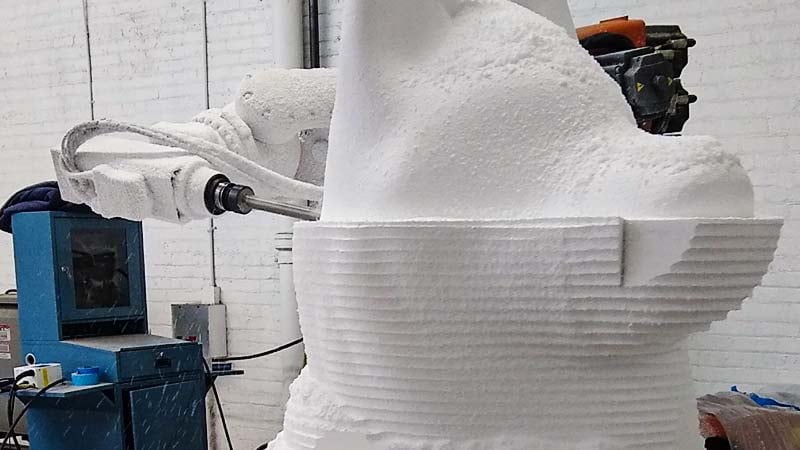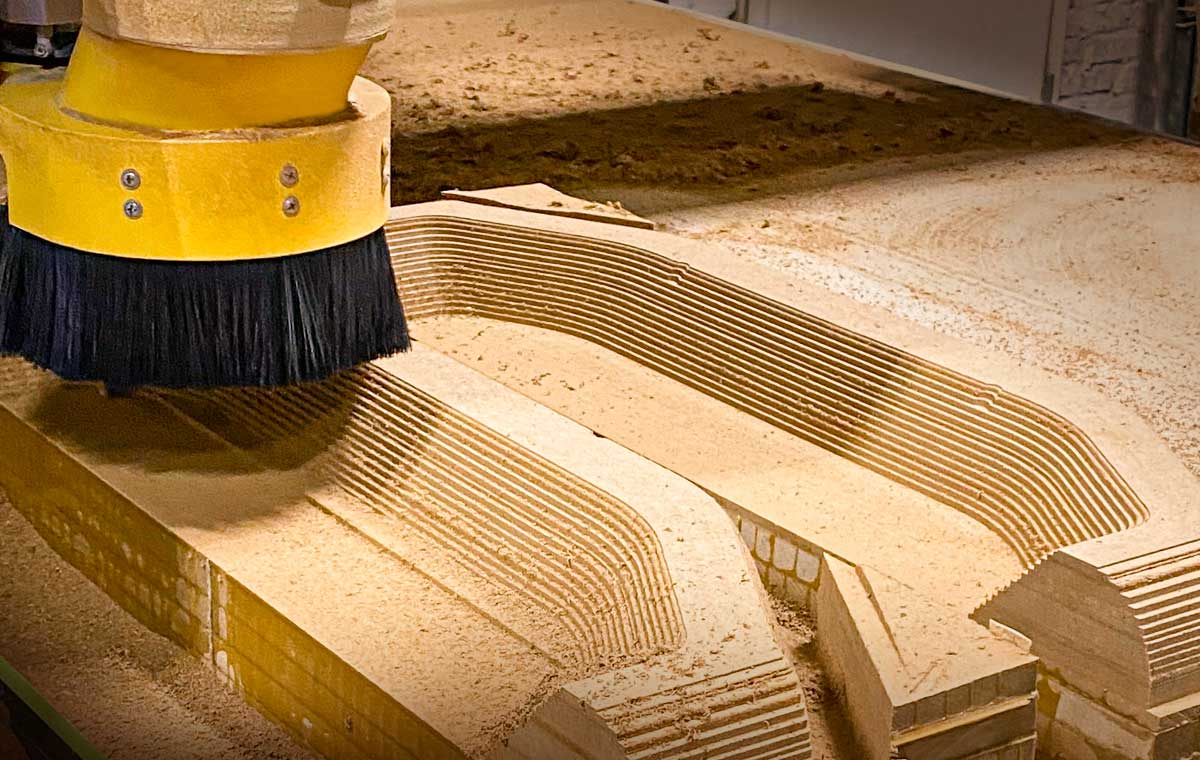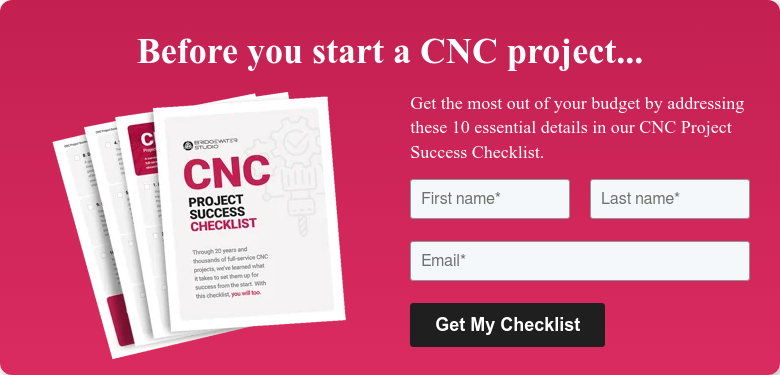The history of CNC serves as the basis of modern design and fabrication. From architecture to experiential marketing, we're in the midst of a golden era, where production of custom elements for large projects is faster, more accurate and more cost-effective than ever.
With so many advances, however, navigating the current CNC landscape can be daunting. Whether you're searching for a specialist vendor, a piece of equipment, or just curious about CNC technology – understanding the evolution of the industry is a great place to start.
What Does CNC Stand For?
“CNC” stands for “computer numerical control.” It is an automated process where machine-assisted tools guided by a computer program perform an operation on raw materials without human assistance. A CNC machine carves any material into an exact shape based on a 3D digital model. CNC saves time, reduces labor, and wastes very little materials because of its extreme precision.
Important Figures in Early CNC History
The earliest history of CNC can be traced back to the aviation industry, when, in 1949, Air Force researcher John T. Parsons developed a new manufacturing process at the Massachusetts Institute of Technology. His goals were twofold: one, develop a way to produce helicopter blades out of steel, and two, figure out how to harden the wings of airplanes—all with a single automated system, if possible.
To achieve this, he connected the controls of a Swiss jig boring machine to a punch card system so its motors would correspond to the movements of preset holes punched into paper cards. The automated system worked so well that in 1968 Parsons received the first Joseph Marie Jacquard Memorial Award from the Numerical Control Society for his contributions.
In 1951, another brilliant engineering mind named Richard Kegg applied the same design to woodwork and created a famous milling machine called the Cincinnati Hydro-Tel. This confirmed that Parsons’s punch card system could be applied to different materials across numerous industries, further sparking corporate and government interest.
However, these early machines were precursors to CNC. Neither Parsons nor Kegg had created true CNC equipment because nothing was digital – modern computers were not yet invented – and so these machines were considered numeric control (NC) as opposed to CNC, which did not come until decades later.
Years later, a computer scientist named Patrick Hanratty made CNC history with his 1957 programming language, the Program for Numerical Tooling (PRONTO), which is still used today by machines to verify bank checks. At this point, computers as we know them were still not involved in the design and fabrication process, though that would change soon enough.
CNC Files: CAD vs. CAM Extensions
After developing PRONTO, Patrick Hanratty went to work for General Motors, where the company used his PRONTO language as the basis for developing the world’s first computer system in which 2D drawings could be digitally scanned and modified, otherwise known as “digital fabrication." This system, released in 1964, was originally named “Design Augmented by Computer” (DAC-1).
The purpose of DAC-1 was to let studios render changes to a 2D drawing without having to make new physical copies. It was essentially a rewritable computer image, but it was very advanced for the 60s.
It was not until personal computers became available in the 80s that Adobe partnered with Apple to expand the principles behind DAC-1 into the two main types of CNC files used today:
- Computer-Aided Design (CAD) – CAD files are used to illustrate 2D drawings and can also create 3D models (a major breakthrough, for DAC-1 could not render 3D modeling).
- Computer-Aided Manufacture (CAM) – After the CAD files have been agreed upon, the CAM files instruct the CNC tools how to perform specific tasks like:
- Routing
- Carving
- Cutting
- Engraving
- Much more!
Nowadays, the studio submits a CAD file to the client to show them a computer simulation of how everything will look. Upon approval, the studio makes a CAM file to operate the CNC equipment. The final product, created by CNC equipment using the CAM file, looks 100% identical to whatever was in the approved CAD file. The technology has improved, but this is how CNC has been since the 80s.

A 7-axis robot is used to produce many types of CNC sculptures.
The Future of CNC
As CNC programs become better and more sophisticated, they are able to control more parts at once. As such, smaller 3-axis CNC equipment is already becoming history in favor of multi-axis (more than three) machines that can get more done.
In recent years, the fabrication services of 4-axis, 5-axis, 6-axis, and even 7-axis CNC machines have grown more desirable than 3-axis machines. This is because multi-axis machines are more versatile and can perform highly complex procedures, which reduces hand-finishing times and lowers project costs.
Bridgewater Studio is a Part of Chicago CNC History
To understand the history of CNC is to understand the future of design and fabrication.
Twenty years ago, a single CNC router enabled small shops like ours to offer solutions that much larger studios couldn’t. Today, that technology has evolved ten-fold and Bridgewater Studio has grown with it every step of the way.
We remain at the forefront of CNC technology worldwide, pushing the boundaries of what is possible to keep pace with the demand for increasingly complex projects. Our ongoing commitment is to stay ahead of the curve for our clients including top brands, architects, museums, and cultural institutions.
Ready to take your next custom fabrication project to the next level? Book a no-obligation strategy session with Bridgewater today. Our end-to-end strategy, design, production, and fabrication studio offers clients a single-vendor solution for all of their digital fabrication needs.


.png)
.png)
.png)








